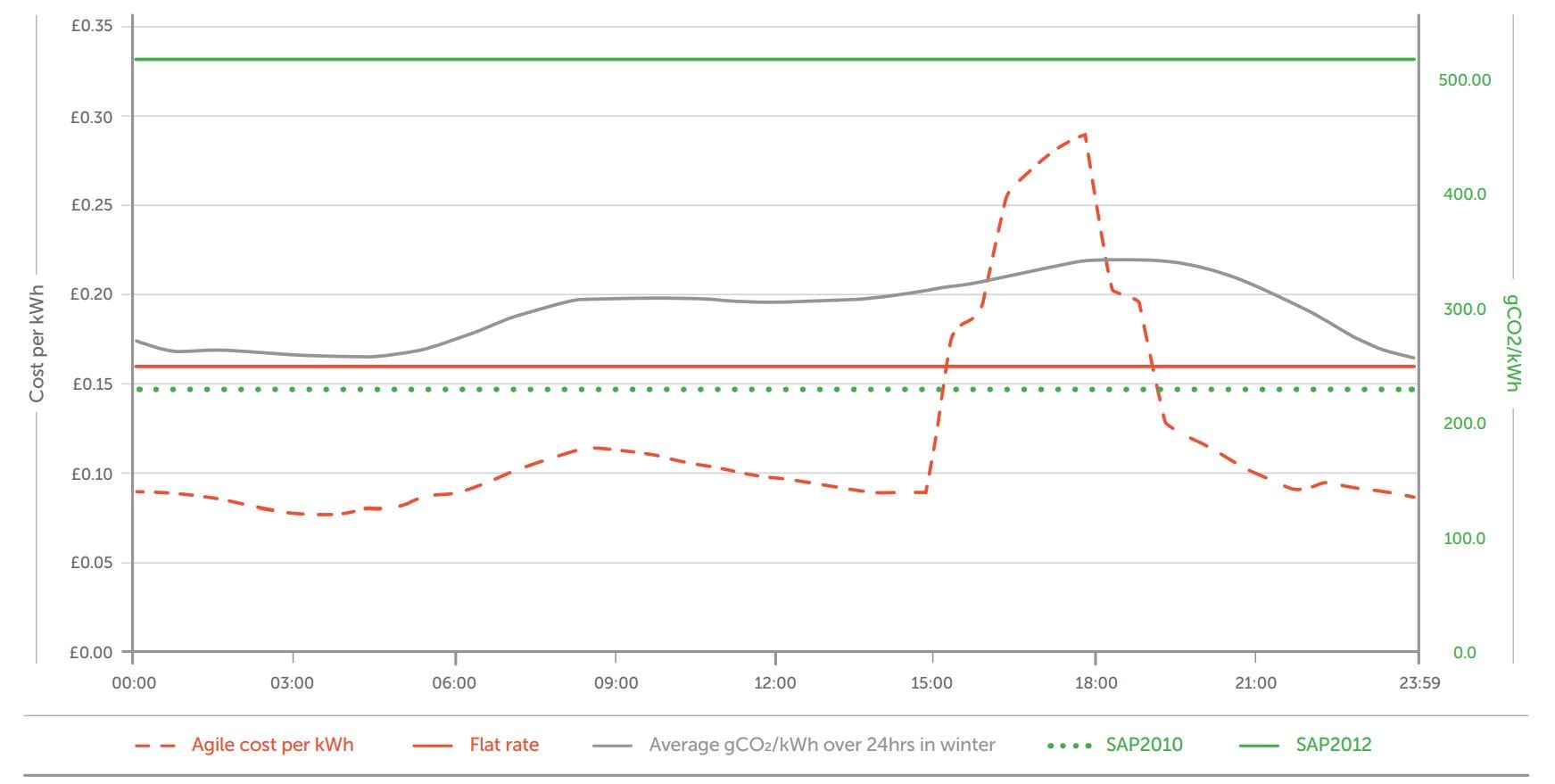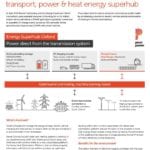Energy Superhub Oxford (ESO)

Ground source review: Energy Superhub Oxford (ESO)
Kensa Contracting delivers ground source heat pumps connected to ambient temperature shared ground loop arrays as part of a £41m world-first Energy Superhub built in Oxford.
Awards:
- ADE’s Special Contribution to Net Zero Award, The Decentralised Energy Awards 2020-21.
- Partnership of the Year, Better Society Energy Awards 2021.
- Highly Commended, Project of the Year, Business Green Leaders Awards 2021.
- Innovation Award, British Renewable Energy Awards 2021.
Ground source review: Energy Superhub Oxford (ESO)
The ESO project is the world’s first low-carbon transport, power and heat energy superhub. It will feature Kensa ground source heat pumps, grid-scale energy storage, the largest hybrid battery ever deployed for EV charging points, and optimised energy trading as a real-life model for large-scale heat and transport decarbonisation.
The project is supported with funding from the UK’s innovation agency, UK Research and Innovation (UKRI), and made possible through the Prospering From an Energy Revolution (PFER) programme. The consortium partners are Oxford City Council, Pivot Power, Habitat Energy, Kensa Contracting, redT energy and the University of Oxford.
Want to join the world’s first Energy Superhub?
We are seeking to work with social landlords with clusters of housing stock ready for retrofit. To be a part of the world-first Energy Superhub Oxford project, get in touch with your Kensa representative or contact Amy at Kensa Contracting’s head office.
- Amy Featherstone (Energy Superhub Oxford Grant Administrator)
- amy.featherstone@thekensagroup.com
What is Energy Superhub Oxford?
The ESO project is a low-carbon energy system that will pave the way for Oxford’s large-scale decarbonisation of power, heat and transport.
In April 2019, Kensa Contracting and the Energy Superhub Oxford consortium were awarded Innovate UK funding for a £41 million project which will deliver a 50MW grid balancing battery connected to superfast EV charge points, as well as domestic Kensa ground source heat pumps (GSHPs) with smart controls. The project aims to reduce emissions and improve public health by accelerating a switch to electric vehicles and decarbonisation of heating for homes and buildings.

The big picture: aims of Energy Superhub Oxford
Discover the decarbonisation goals of the project, and hear how technologies will work together to form a low-carbon blueprint for cities and communities.
How will the Energy Superhub Oxford project work?
Smart software will manage the energy storage, electric vehicle charging and heat pumps to reduce strain on the grid and allow it to accommodate more renewables. Kensa Contracting will install new heating systems consisting of award-winning Kensa ground source heat pumps with Shared Ground Loop Arrays. These will integrate with Switchee smart controls linked to a new, cloud-based platform – the Kensa heat optimisation platform – that combines property information with time-of-use tariffs to produce an optimised heating schedule.
These integrated heating systems will be the first of their kind in the UK. The scheme will also be the only renewable heating solution capable of delivering domestic heating at a lower running cost than a traditional gas boiler, with no local emissions and the lowest carbon intensity of any heating. Working within strict comfort parameters, the Kensa heat optimisation platform will use the fabric of the property to store heat energy ahead of peak energy times. It will do this by raising the temperature of the building when electricity is cheap, allowing the GSHP to turn off when electricity is most expensive.
Ground source heat pumps: how they work & the route to decarbonisation
Dr Matthew Trewhella, Managing Director of Kensa Contracting, explains the ground source heat pump basics, the project so far, and how heat pumps will play a part in the bigger picture of decarbonising the UK’s energy.
How will heat pumps, smart controls & time-of-use tariffs work together?
The Energy Superhub Oxford project will feature Kensa Shoebox heat pumps in individual properties, connected to shared ground loop arrays and integrated with smart controls and dynamic energy pricing.
- A new set of dynamic energy prices are released each day.
- The smart control uses machine learning to create a model for heating the property based on occupant’s preference and building fabric.
- Kensa’s heat optimisation programme combines the energy prices and heat model to create a heating schedule that balances comfort and cost.
- The heating schedule is sent to the smart control.
What are the benefits for the environment?
The carbon intensity of electricity roughly correlates with the cost, as electricity is cheapest when wind and solar generation is high. This means that load shifting of heating immediately reduces the carbon intensity.
Dynamic electricity tariffs offer consumers cheap energy when electricity demand is low and renewable energy is plentiful – and higher prices when demand peaks.
A dynamic time-of-use electricity tariff is being recommended to ESO’s occupants, providing 48 half-hourly price points each day and allowing households to take advantage of this dynamic pricing.
Heat can account for over 50% of a property’s energy consumption and this means that large savings can be made by heating homes outside of peak periods. The Kensa heat optimisation programme automates this ‘load shifting’ so that consumers make savings from dynamic tariffs without having to change their behaviour.
Summer 2022: A University of Oxford study of the ESO ground source heat pump installations noted most tenants reported saving money, in many cases around 50%, thanks to the Ground Source Heat Pumps in comparison to running costs of their previous direct electric night storage heaters. Initial trials of load shifting the ground source heat pumps have been successful, demonstrating the concept works in practice, whilst maintaining the comfort levels of the residents.

What are the benefits for end users?
Based on replacing night storage heaters (as per the 56 out of the 60 properties on the first phase of the ESO project with Stonewater Housing) with shared ground loop arrays and individual ground source heat pumps, the scheme could produce lifetime bill savings of £15,000 – £20,000 per property (over a 40-year nominal lifetime using the ECO3 calculation methodology).
When combined with a smart thermostat and the Kensa heat optimisation platform, the predicted lifetime bill savings per property rise to £20,000 – £26,000.
Consumers will benefit from clean, renewable heat with savings of up to 25% compared to a standard ground source heating system.
The four remaining Stonewater Housing properties in the first pilot phase that are currently heated by gas already have cheaper heating and therefore savings will be lower, but even they could see lifetime bill savings of £2,000 – £5,000.
The participating households in the Energy Superhub Oxford scheme with Kensa Shoebox ground source heat pumps should expect total lifetime bill savings of £2.5 – £3.5 million*.
What are the benefits for social landlords?
By taking part in this project, our landlord partners will benefit from a reduced system installation cost as the Innovate UK grant will cover the cost of the new wet central heating system and the Switchee smart controls. In addition, all properties will receive new smart meters. Our partners will also benefit from fully-funded tenant liaison and information events, delivered by Kensa Contracting and supported by the Energy Systems Catapult and the University of Oxford.

How much would a typical electricity tariff cost?
The properties featuring ground source heat pumps will switch over to a dynamic time-of-use electricity tariff, which we expect them to pay an average of around 10-12p/kWh for their electricity.
Will there be any impact on the cost of non-heating appliances?
Yes, Kensa anticipates the cost of electricity for non-heating appliances for residents to also reduce. Analysis of dynamic time-of-use electricity tariff has shown that householders typically save £9 per month even when their peak electricity use is between 4pm and 7pm. If residents actively engage with load shifting of other non-heating loads, for example, operating the dishwasher or washing machine at the best times, they could increase the savings up to £17 per month.
We have estimated the savings from automated load shifting of the heating system to be £15-30 per month – compared to ground source heat pumps with flat-rate tariffs. So even if residents’ afternoon electricity costs increased slightly, they would still see a reduction overall. As part of this project, Kensa will be analysing electricity consumption with a half-hourly resolution, and fitting extra power meters to allow us to separate out heat pump operation from general electrical consumption. This will allow us to continuously calculate what the overall energy costs would be if they were using a heat pump with a fixed-rate tariff or a gas boiler heating system.
The data will also allow us to fine-tune the heating optimisation and provide advice to help residents reduce their non-heating energy costs.
Will any thermal fabric improvements be made to reduce a home’s heating demand?
As part of the project’s first phase, Stonewater Housing Association already upgraded the fabric to include loft insulation, cavity wall insulation and double glazing so no further work was needed on this first group of properties. The next group of properties (170) are new build and are already planning to exceed current building regulations for fabric efficiency.
How will the electricity grid cope with large-scale consumption?
The project is designed to utilise heat pumps to manage grid constraints, using them to absorb excess generation from renewables so that wind or solar does not need to be switched off. This will work together with the battery and the electric vehicles, to create a smarter, more connected local grid.

Pilot heating phase in Blackbird Leys – Watch the virtual tour
Join Dr Matthew Trewhella for a virtual site tour of ESO’s first heating trial. 60 homes are being retrofitted with Shoebox ground source heat pumps and smart controls to reduce heating bills, combat carbon emissions and optimise heating schedules for residents.
See the live blog for Blackbird Leys
About Energy Superhub Oxford
Energy Superhub Oxford is one of four local energy system demonstrators run by Innovate UK. Representing some of the largest industrial innovation grants funded by the UK government, these projects are being supported by multiple government agencies, and are receiving national media interest. It is hoped that our partners in this project will engage with promotional activities, including case studies and televised interviews.
Energy and Clean Growth Minister, Claire Perry, said:
Oxford is set for a smart energy overhaul, with these projects aiming to meet the city’s energy needs through greener, low-carbon technologies. Backed by government funding, this has the potential to completely change the way people go about their daily lives – from going to work on an electric bus to using the heat rising from the earth to heat your home without gas.
These projects are an example of our modern Industrial Strategy in action, helping companies and consumers seize the opportunity of the global shift to a cleaner, greener, more flexible energy system.






